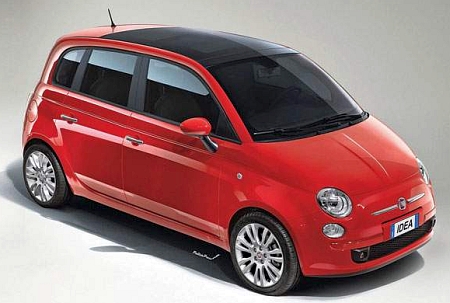 |
| Ferrari 599 GTB |
Styled by Italian car design firm Pininfarina, the 2010 Ferrari Fiorano 599 GTB is a high-performance, exotic two-passenger gran turismo. It’s Ferrari’s most powerful V12 and one of themightiest performers in the exotic sports car class. "The Ferrari sweeps through broader emotional extremes - soft and sweet now, hard and fast when provoked - revealing the wild Italian temptress within," writes Automobile Magazine. "The amazing thing is how the 599GTB is able to embrace every situation with an astute blend of confidence and competence."
The 2010 Ferrari Fiorano 599 GTB’s name is a combination of its engineering and styling heritage. While the 599 stands for its engine’s displacement of 5,999 cc, GTB is short for “Gran Turismo Berlinetta” or “grand touring hardtop” in Italian. According to Cars.com, “The Ferrari 599 GTB Fiorano borrows its name from the [Fiorano] test track where Ferrari tests both its road cars and Formula 1 racers, and it’s designed to bring F1 to the streets.”
Ferrari set out to create a supercar and that’s exactly what the 2010 Fiorano 599 GTB is. Critics report that this engineering masterpiece is fast, powerful, upscale and altogether satisfying. "Front-engine, grand-touring machines have a fairly specific pecking order, and the 599 is already on top, trumping most of its competitors in power or handling, if not both," writes Car and Driver.
Dimensions and Weight
Overall length 183.7 in
Overall width 77.2 in
Height 52.6 in
Wheelbase 108.3 in
Front track 66.5 in
Rear track 63.7 in
Dry weight 3482 lb*
Kerb weight 3722 lb*
Boot (trunk) capacity 11.3 cu ft
Fuel tank capacity 27.7 US gal (23.1 UK gal)
Weight distribution 47%/53% front/rear
Brakes
Front 13.9 x 1.3 in
Rear 12.9 x 1.1 in
 |
| Ferrari 599 GTB Interior |
Type 65° V12
Bore/stroke 3.62 x 2.96 in
Unit displacement 30.51 cu in
Total displacement 366.08 cu in
Compression ratio 11.2:1
Maximum power 456 kW (620 CV) at 7600 rpm
Maximum torque 608 Nm (448 lbft) at 5600 rpm
Maximum revs per minute 8400 rpm (with limiter)
Specific output 103 CV/I
Transmission and Gearbox
Transmission and gearbox: Manual or F1; 6-gears+Reverse
Performance
Maximum speed : over 205 mph
0-100 km/h (0-62 mph): 3.7 s
0-200 km/h (0-124 mph): 11 s
Suspension
Electronic Controls
Electronic controls: Tyres pressure and Temperature
Electronic controls : Monitoring System TPTMS
Electronic controls : Control for Stability and Traction with F1-Trac
Tyres
Front : 245/40 19”
Rear : 305/35 20”
Fuel Consumption
Combined: 17.9 l/100 km
CO2 Emissions
Combined 415 g/km















































